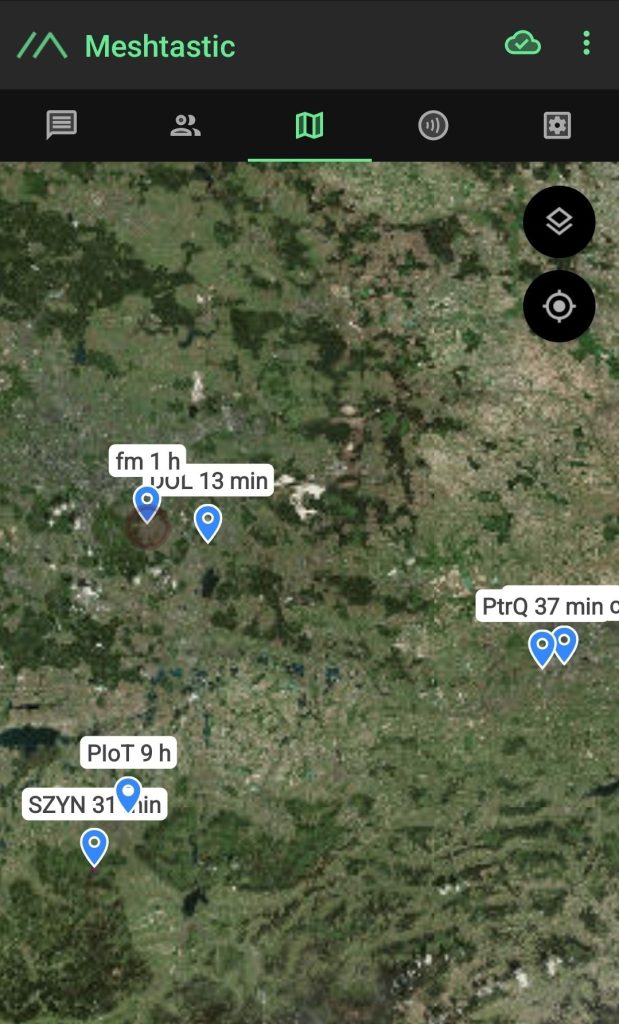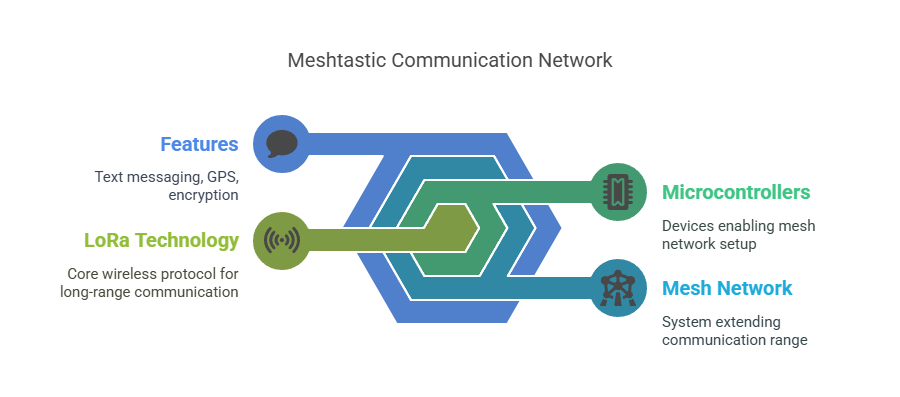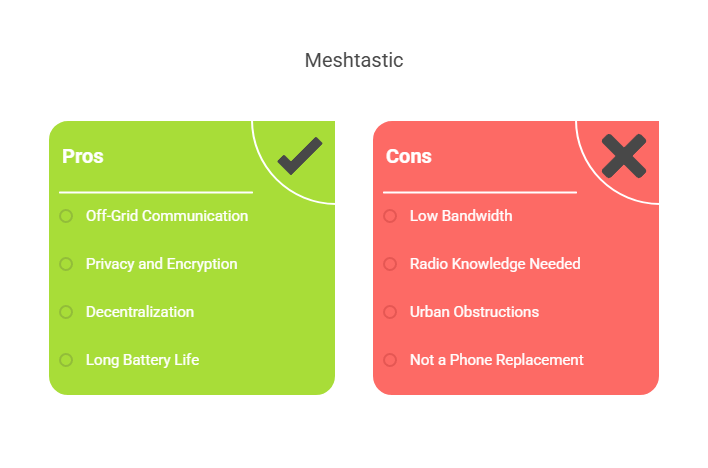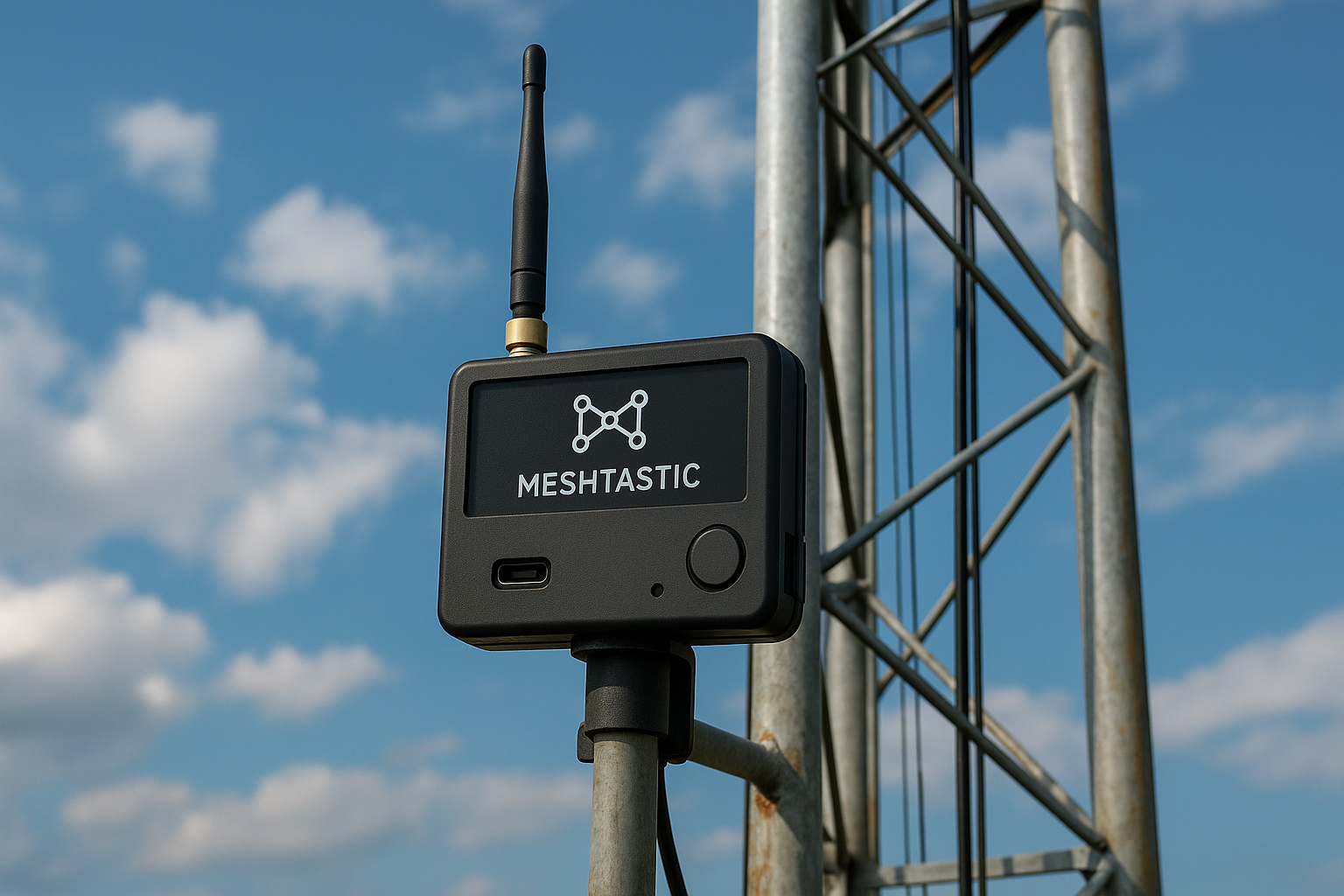In a world dominated by centralized infrastructure and always-online expectations, Meshtastic stands out as a quiet revolution. It’s not just a clever project or an open-source oddity—it’s a functional, practical, and increasingly powerful tool that enables off-grid, encrypted communication using inexpensive hardware and no cellular or Wi-Fi networks. Whether you’re a backcountry hiker, a prepper, an open-source enthusiast, or simply someone intrigued by resilient technologies, Meshtastic deserves your attention.
What is Meshtastic?
Meshtastic is an open-source project that allows people to communicate over long distances using inexpensive LoRa radios (short for “Long Range”). LoRa is a wireless protocol that trades bandwidth for incredible range and power efficiency. Using tiny microcontrollers like the TTGO T-Beam or Heltec devices, users can set up a mesh network of nodes that pass messages along from device to device until they reach their destination. As most of the nodes that i manage are solar, even in the event of huge blackout, you still stay with inact possibility to reach out people via text messaging across the whole city.
Unlike traditional walkie-talkies or ham radios, Meshtastic provides text-based messaging, GPS location sharing, and AES encryption out of the box. There’s no need for a cell tower, internet access, or licensing (in most configurations). It’s a mesh network—meaning each (almost) node can relay messages, extending the range and robustness of the entire system.

Getting Started: Provisioning a Heltec V3 Device
One of the most accessible ways to join the Meshtastic ecosystem is with the Heltec Wireless Stick V3, a compact and budget-friendly board that supports LoRa communication. Just go to site like amazon or other marketplace and buy this : Heltec V3 with chasis. To get started, you’ll need to purchase the Heltec V3 (make sure to choose the version that matches your region’s frequency, such as 868 MHz for Europe or 915 MHz for North America), along with a compatible LoRa antenna, which is typically included. A USB-C cable is essential for flashing the device and supplying power. Flashing the Meshtastic firmware is straightforward using the official GUI or CLI flasher tools, available for Windows, macOS, and Linux but preferably just use web flasher.
After connecting the Heltec to your computer, the flasher tool installs the appropriate firmware, transforming it into a Meshtastic node within minutes. You can then pair it with the mobile app over Bluetooth to set up your channel and mode, rech out to your local meshtastic community to get what type of network is in the air near you.
For field use, consider adding a small LiPo battery and optionally a 3D-printed enclosure to protect your gear. With minimal investment and setup, you’ll have a rugged, long-range communication device ready for off-grid messaging.
Why Use Meshtastic?

1. Off-Grid Communication
Meshtastic shines where conventional communication fails:
- Backcountry hiking and camping
- Festivals or large outdoor events
- Natural disasters or blackouts
- Maritime or remote rural environments
Even when mobile networks are down, a Meshtastic mesh remains functional. In a group setting, nodes can relay messages over several kilometers, creating an ad hoc private communication network.
2. Privacy and Encryption
By default, messages on a Meshtastic network are encrypted with AES-256, ensuring that even if someone intercepts a message, they won’t be able to read its contents unless they know the pre-shared key.
You control who’s in your mesh—ideal for private teams, rescue squads, or families.
3. Decentralization and Resilience
No SIM cards. No subscriptions. No cloud dependence. Each device is autonomous, and the more nodes you add, the stronger the network becomes. It’s not just a fallback—Meshtastic is a vision of resilient, community-owned infrastructure.
4. Battery Life Measured in Days (or Weeks)
Unlike your smartphone, which dies in a day of active use, Meshtastic nodes can last for days or even weeks on a single charge—especially in low-power or relay mode. Most of the nodes that i operate on are solar + battery powered, infinite energy glitch? Checked!
Use Cases and Scenarios
- Emergency Preparedness: In areas prone to earthquakes, wildfires, or hurricanes, Meshtastic provides a backup layer of communication.
- Hiking & Expeditions: Keep in touch with your group even when scattered over wide terrain.
- Community Mesh Networks: Urban or rural groups can create local mesh-based chat channels.
- Event Coordination: At music festivals, protests, or sporting events, teams can coordinate securely without relying on congested mobile networks.
- Educational Projects: Ideal for teaching wireless networking, mesh topology, or open-source development.
Limitations and Challenges

Meshtastic isn’t perfect, and it’s not meant to replace smartphones or satellite messengers:
- Low Bandwidth: Messages are text-only and limited in size. You can’t stream media or send large files.
- Radio Knowledge Helps: Tuning antennas, understanding regional regulations, and optimizing settings may require some learning.
- Urban Obstructions: Buildings, trees, and terrain can severely impact LoRa’s effectiveness. Antenna placement is crucial.
- Not a Phone Replacement: It’s more like a “text walkie-talkie” than a full communications suite.
The Community and Ecosystem
Meshtastic is more than software—it’s a community-driven movement. The official Discord and GitHub repositories are alive with developers, hikers, and tinkerers continuously improving the code, designing better antennas, and testing new use cases.
The project regularly sees updates adding features like:
- MQTT integration
- Remote configuration via Wi-Fi or serial
- Mapping tools and UI improvements
- Bridging to other networks (e.g., APRS, Ham)
The openness of the system encourages hacks, integrations, and extensions, whether that’s linking Meshtastic to Home Assistant or building autonomous sensor nodes.
The Future of Off-Grid Messaging?
As the world becomes more reliant on centralized, subscription-based infrastructure, Meshtastic offers a refreshing alternative: a peer-to-peer, power-efficient, secure, and open communication system. It’s not just a toy for nerds—it’s a toolkit for resilience, autonomy, and freedom.
Is that only system in the market? No! There are few more but with a bit steeper learning curve and with that, smaller community.
It would be:
- Reticulum – a bit wider approach, networking stack that enables you to build crypto-safe networks od “any-hardware”
- Meshcore – refreshed version of Meshtastic, we’re you can build bigger networks easier, fir instance because of manual routingqlq
Whether you’re venturing off the grid or preparing for the unexpected, Meshtastic makes one thing clear: You don’t need the internet to stay connected.
Stay curious.



